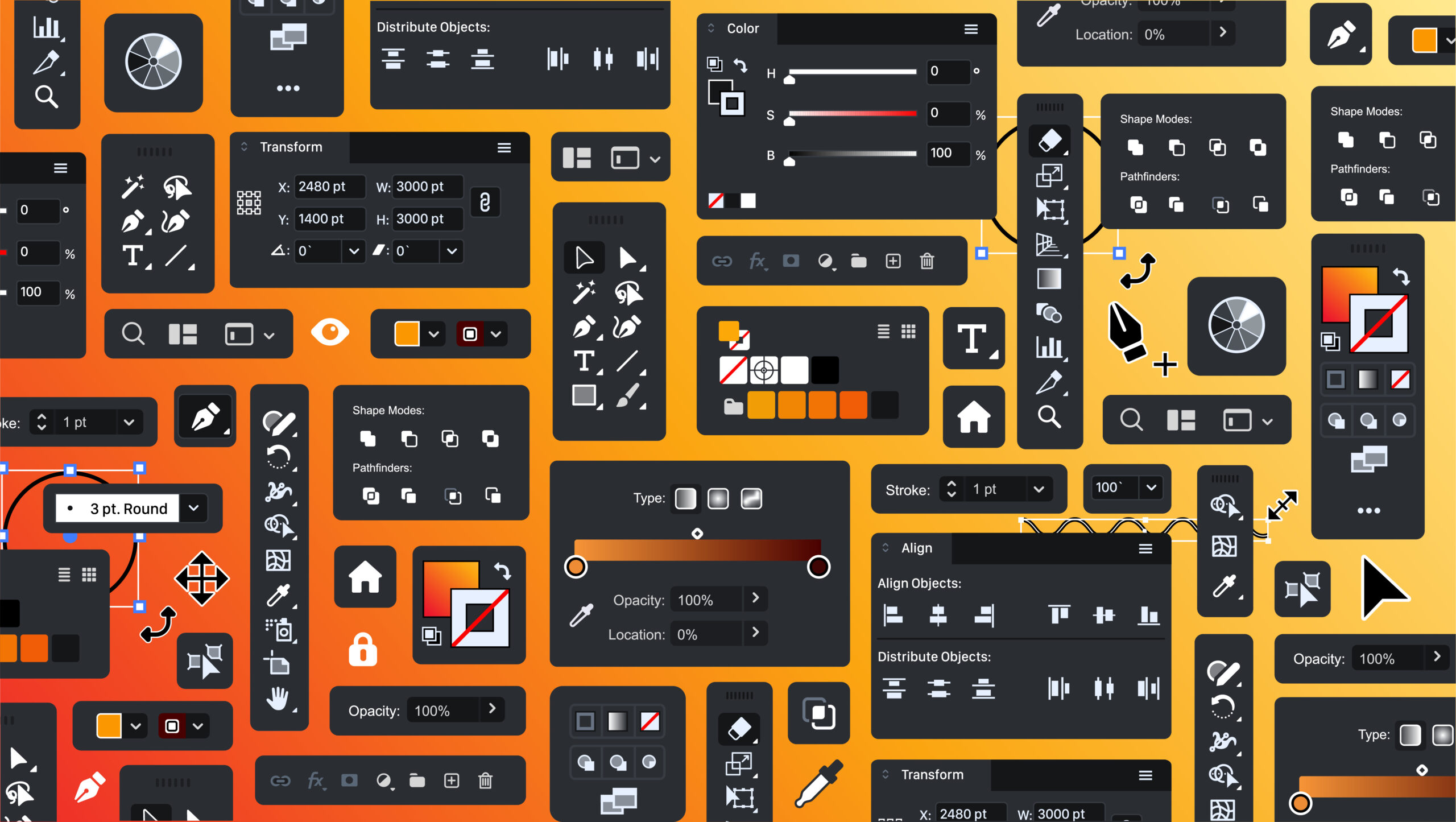Graphic design is constantly evolving. Each year brings new tools, updated software, and fresh ways to collaborate. In 2025, staying competitive as a designer means mastering not only the classics but also the emerging platforms that make creative work faster, smoother, and more effective. Over the years, I have discovered a combination of tools that I rely on daily, and I want to share the ones I consider essential for any designer today.
Adobe Creative Cloud: The Industry Standard
Adobe Creative Cloud remains a cornerstone for designers, and for good reason. Programs like Photoshop, Illustrator, and InDesign are unmatched for their versatility and professional capabilities. Photoshop continues to be my go-to for image editing and digital artwork, while Illustrator allows me to create precise vector graphics. InDesign remains essential for layout design, particularly for print and multi-page documents. Even in 2025, Adobe CC continues to innovate, offering features powered by AI that save time on repetitive tasks while enhancing creativity. Mastering these tools is not just about technical skill—it’s about understanding how to push them to their full potential to bring ideas to life.
Figma: Collaboration and Prototyping
Figma has transformed the way designers work collaboratively. Unlike traditional software that requires local installations, Figma is cloud-based, allowing multiple team members to work on the same project simultaneously. I use Figma for interface design, prototyping, and real-time feedback. Its intuitive vector tools and interactive components make it easier to create mockups that feel like the final product. The best part is that clients and stakeholders can view and comment directly in the platform, reducing back-and-forth emails and keeping projects moving efficiently. For any designer focused on user interfaces or collaborative projects, Figma is indispensable.
Webflow: Bridging Design and Development
Webflow is another tool I have embraced wholeheartedly. In the past, designers had to hand off files to developers, which often led to discrepancies between the original vision and the final website. Webflow allows me to design directly in a live environment while generating clean, production-ready code. This not only speeds up the workflow but also gives me more control over how my designs appear online. Features like responsive design tools, CMS integration, and animations make it possible to create visually stunning, interactive websites without deep coding knowledge. For designers aiming to combine creativity with technical execution, Webflow is a game changer.
Collaborative Platforms: Enhancing Team Efficiency
Design is rarely a solo endeavor. Platforms like Slack, Miro, and Notion have become critical for keeping teams aligned and projects on track. I use Slack for communication, quick feedback, and sharing files instantly. Miro is perfect for brainstorming sessions, mind maps, and visual planning, helping teams capture ideas in real time. Notion serves as a hub for project documentation, deadlines, and asset management. These collaborative tools help me ensure that everyone, from designers to clients, is on the same page throughout the creative process.
AI Tools: Enhancing Creativity, Not Replacing It
Artificial intelligence is becoming more integrated into design workflows. Tools that assist with color palettes, font pairing, and layout suggestions can save hours of work. I use AI to explore new ideas, generate initial drafts, and test multiple iterations quickly. However, I see AI as a complement to creativity rather than a replacement. The human touch is what makes design meaningful, and AI is most powerful when it supports decision-making instead of dictating it.
Staying Adaptable
One of the lessons I have learned over my career is that adaptability is crucial. The tools I rely on today may evolve or be replaced in the future. Staying informed about updates, learning new features, and experimenting with emerging platforms ensures that I continue to create work that is both innovative and practical. It also allows me to advise clients and teams with confidence, knowing that the solutions I recommend are grounded in expertise.
Integrating Tools Into a Seamless Workflow
The real power comes not from mastering individual tools, but from integrating them into a seamless workflow. For example, I might start a design in Illustrator, import it into Figma for prototyping, and then bring it into Webflow to make it interactive online. Throughout the process, I coordinate with my team using Slack, document decisions in Notion, and sketch ideas in Miro. By connecting tools in this way, I can focus on creativity while ensuring projects stay organized, efficient, and high quality.
Continuous Learning
Graphic design is a field where continuous learning is part of the job. New features, platforms, and technologies emerge constantly, and keeping skills current is essential. I dedicate time each week to exploring tutorials, attending webinars, and experimenting with new tools. Staying curious and proactive about learning not only improves my technical abilities but also expands my creative possibilities.
Designing for Impact
At the end of the day, tools are only as valuable as the work they enable. Mastering Adobe CC, Figma, Webflow, and collaborative platforms allows me to create designs that are both beautiful and functional. These tools empower me to solve problems, engage users, and bring ideas to life in ways that were unimaginable even a few years ago.
By 2025 standards, the most successful designers are those who combine technical skill, creativity, and strategic use of tools. Mastering the right platforms is about more than efficiency—it’s about creating work that resonates, communicates, and leaves a lasting impression. Staying current, adaptable, and open to learning ensures that I can continue delivering meaningful designs that make a difference.
